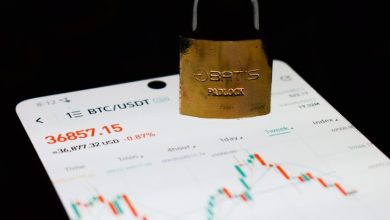How to Conduct Due Diligence on Crypto Projects

- Understanding the importance of due diligence in the crypto world
- Key factors to consider when researching crypto projects
- Tools and resources for conducting thorough due diligence on crypto projects
- Common red flags to watch out for during due diligence
- How to verify the legitimacy and credibility of a crypto project
- Tips for evaluating the team, technology, and community behind a crypto project
Understanding the importance of due diligence in the crypto world
When it comes to investing in the crypto world, due diligence is of utmost importance. This process involves thoroughly researching a project before committing any funds. By conducting due diligence, investors can reduce the risk of falling victim to scams or fraudulent schemes. It allows them to make informed decisions based on reliable information.
One key aspect of due diligence is assessing the team behind the crypto project. Investors should look into the team members’ backgrounds, experience, and track record in the industry. A strong and reputable team is more likely to deliver on their promises and successfully execute the project.
Another important factor to consider is the project’s whitepaper. This document outlines the details of the project, including its goals, technology, use case, and roadmap. Investors should review the whitepaper carefully to ensure that the project is viable and has a clear plan for development.
Furthermore, investors should also evaluate the project’s community and market sentiment. A strong and engaged community is a positive sign that the project has support and potential for growth. Monitoring social media channels and forums can provide valuable insights into how the project is perceived by the public.
Overall, due diligence is crucial for making informed investment decisions in the crypto world. By taking the time to research and analyze a project thoroughly, investors can mitigate risks and increase their chances of success in the volatile cryptocurrency market.
Key factors to consider when researching crypto projects
When researching crypto projects, there are key factors that investors should consider to ensure they are making informed decisions. These factors can help assess the viability and potential risks associated with a particular project.
- Team: One of the most important factors to consider is the team behind the project. Look into their experience, qualifications, and track record in the industry. A strong and experienced team can greatly increase the likelihood of success.
- Technology: Evaluate the technology that the project is built on. Is it innovative? Does it solve a real-world problem? Understanding the technology can give insight into the project’s long-term potential.
- Community: The size and engagement of the project’s community can be a good indicator of its popularity and potential for growth. A strong community can provide support and drive adoption.
- Partnerships: Look into the partnerships that the project has established. Partnerships with reputable companies can add credibility and open up opportunities for collaboration and growth.
- Market: Consider the market demand for the project’s product or service. Is there a clear need for it? Understanding the market can help assess the project’s potential for success.
By taking these key factors into account when researching crypto projects, investors can make more informed decisions and mitigate potential risks. Conducting due diligence is essential in the volatile and rapidly evolving crypto market to ensure the best possible outcomes.
Tools and resources for conducting thorough due diligence on crypto projects
When it comes to conducting due diligence on crypto projects, having the right tools and resources at your disposal is crucial. These resources can help you gather all the necessary information to make informed decisions about investing in a particular project. Here are some essential tools and resources you can use to conduct thorough due diligence on crypto projects:
- Whitepapers: Whitepapers are documents that outline the details of a crypto project, including its technology, team, roadmap, and tokenomics. Reading the whitepaper can give you a good understanding of what the project is about and its potential for success.
- Team information: Researching the team behind a crypto project is essential. Look for information about team members’ experience, qualifications, and past projects. A strong and experienced team is more likely to deliver on their promises.
- Community engagement: Check the project’s social media channels, forums, and community groups to gauge the level of engagement and support. A project with an active and engaged community is more likely to succeed.
- Code reviews: If you have the technical expertise, you can review the project’s code on platforms like GitHub. This can help you assess the quality of the code and the project’s overall technical soundness.
- Market data: Analyzing market data can give you insights into the project’s performance and potential future growth. Look at factors like trading volume, market capitalization, and price trends to make informed decisions.
By using these tools and resources, you can conduct thorough due diligence on crypto projects and make more informed investment decisions. Remember to always do your own research and never invest more than you can afford to lose.
Common red flags to watch out for during due diligence
During the due diligence process for crypto projects, it is crucial to watch out for common red flags that may indicate potential risks or issues. These red flags can help investors make more informed decisions and avoid potential scams or fraudulent activities.
- One red flag to watch out for is a lack of transparency in the project’s whitepaper or documentation. If key information is missing or unclear, it could indicate that the project is not legitimate or that the team behind it is not trustworthy.
- Another red flag is a lack of a clear roadmap or timeline for the project’s development. Without a roadmap, investors may not know what to expect in terms of milestones or progress, raising concerns about the project’s credibility.
- Unrealistic promises or guarantees of high returns with little to no risk are also red flags to be wary of. If something sounds too good to be true, it probably is, and investors should be cautious about investing in such projects.
- Poor communication or responsiveness from the project team can also be a red flag. If the team is unresponsive to questions or concerns, it may indicate that they are not committed to transparency or building a strong community around their project.
- Lastly, a history of previous failed projects or a lack of experience in the team members can also raise red flags. Investors should research the team’s background and track record to ensure they have the expertise and skills necessary to successfully execute the project.
By being aware of these common red flags during due diligence, investors can better protect themselves and make more informed decisions when evaluating crypto projects. It is essential to conduct thorough research and analysis to mitigate risks and maximize the potential for successful investments in the crypto space.
How to verify the legitimacy and credibility of a crypto project
When it comes to verifying the legitimacy and credibility of a crypto project, there are several key factors to consider. One important aspect is to research the team behind the project. Look into their backgrounds, experience, and track record in the crypto space. A reputable and experienced team is more likely to deliver on their promises and execute the project successfully.
Another crucial step is to examine the project’s whitepaper. The whitepaper should clearly outline the problem the project aims to solve, the proposed solution, the technology behind it, and the roadmap for development. Make sure to scrutinize the details and ensure they are realistic and feasible.
Furthermore, it is essential to assess the project’s community and partnerships. A strong and engaged community, as well as reputable partnerships, can be indicators of a project’s credibility. Look for active communication channels, community engagement, and endorsements from trusted partners in the industry.
In addition, conducting a thorough analysis of the project’s tokenomics is vital. This includes understanding the token distribution, utility, and potential for value appreciation. A well-thought-out tokenomics model can contribute to the project’s long-term success and sustainability.
Lastly, it is advisable to check for any red flags or warning signs that may indicate potential issues with the project. This could include lack of transparency, unrealistic promises, or a history of failed projects by the team members. Trust your instincts and if something seems too good to be true, it probably is.
Tips for evaluating the team, technology, and community behind a crypto project
When evaluating a crypto project, it is crucial to assess the team, technology, and community behind it. The team is the driving force behind any project, so it is essential to research their experience, qualifications, and track record in the crypto industry. Look for a diverse team with a mix of technical expertise, business acumen, and industry connections.
In terms of technology, you should evaluate the project’s whitepaper, roadmap, and codebase. The whitepaper should clearly outline the project’s goals, use cases, and technical specifications. The roadmap should provide a timeline for key milestones and deliverables. Finally, the codebase should be open-source, well-documented, and actively maintained by the development team.
The community surrounding a crypto project can also provide valuable insights. Look for active social media channels, online forums, and community events. A strong and engaged community can help drive adoption, increase liquidity, and boost the project’s overall credibility. Pay attention to how the team interacts with the community and addresses concerns or feedback.
By thoroughly evaluating the team, technology, and community behind a crypto project, you can make more informed investment decisions and mitigate risks. Conducting due diligence is essential in the volatile and rapidly evolving world of cryptocurrencies. Take the time to research and analyze these key factors before committing your resources to any project.



